A diamond’s color is normally graded on a scale of D (colorless) to Z (light yellow). However, if the diamond’s color is stronger than a Z rating, then it is considered ‘fancy’ colored. Because fancy color diamonds are more rare than colorless diamonds, they are also more valuable. The rarest, and therefore most expensive, colors are pink and green.
Fancy color diamonds are formed the same way that colorless diamonds are, but with one unique difference. If foreign particles become trapped while a forming diamond is crystallizing, it can alter the chemical process of formation and as a result, change its color. Each different color is caused by a different structural irregularity or trace element.
Here is a list of each color’s cause:
- Yellow — Presence of nitrogen
- Brown, Pink, and Red — Color graining, which results from structural irregularities in the crystal lattice – sometimes in combination with an impurity
- Blue — Presence of boron, possibly presence of hydrogen
- Green — Natural radiation
- Gray and Violet — Presence of hydrogen (Violet diamonds are still being studied to confirm that this is the cause)
- Black — Dark inclusions or impurities, which are great in number and evenly distributed throughout a diamond
- Orange — Structural irregularities, combined with traces of nitrogen and possibly other elements

Grading Fancy Color Diamonds
When grading a fancy color diamond, the most important of the 4C’s is, naturally, color. A diamond can be noticeably included but still considered extremely valuable if the face up color is beautiful enough. Still, one clarity issue that fancy colors can have that colorless don’t is color graining.
A fancy color’s cut and carat can heighten it’s face up color value. A diamond that is larger and/or has a deeper pavilion allows light to travel in farther, creating a richer and more intense color. The style of cut is also an enhancing factor. Specifically, the radiant cut is known to boost the color of any diamond, even those on the colorless scale; stones that might otherwise be graded as Z (tinted yellow) can become fancy yellows if cut into the radiant shape.
GIA’s scale for grading fancy color is not totally linear, as seen in the chart below.
But the spectrum is as follows: FAINT – VERY LIGHT – LIGHT – FANCY LIGHT – FANCY – FANCY INTENSE – FANCY DARK – FANCY DEEP – FANCY VIVID
Color Treated Diamonds
Color treated diamonds can be a good alternative to naturally fancy colored diamonds if you are on a budget. Not to be confused with lab-grown diamonds, color treated diamonds are stones that were naturally colorless (or lightly tinted), and later their natural color tints were enhanced to make them fancy colored. The idea is to magnify a tinted diamond’s color in order to increase its desirability and value. Labs will use HPHT (High Pressure High Temperature)—interestingly, this same method can be used for the reverse effect, to take a light colored (usually brown or yellow) diamond and make it a D colorless diamond.
In Conclusion
Whether you want a naturally fancy colored diamond or a color treated diamond, a fancy vivid or a fancy light, is up to your own personal preference. Finding an 8 carat diamond in one of the rarest and more desirable colours e.g. yellow, may be a stretch, but other fancy colours may be available if you find the right specialist.

